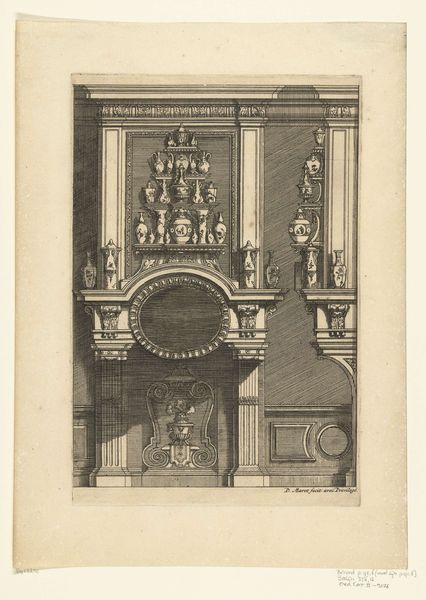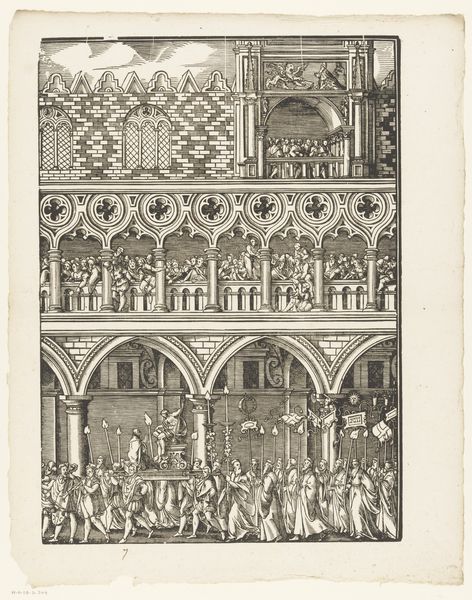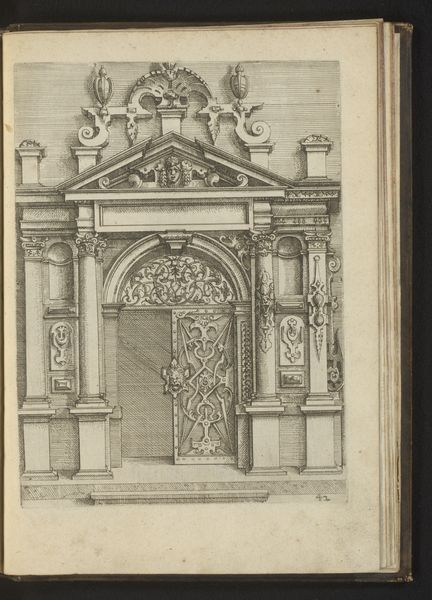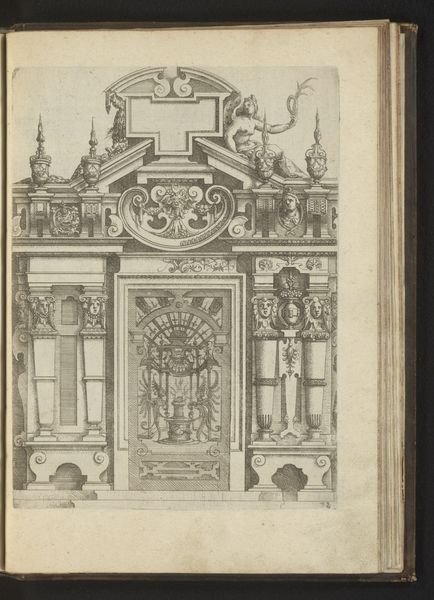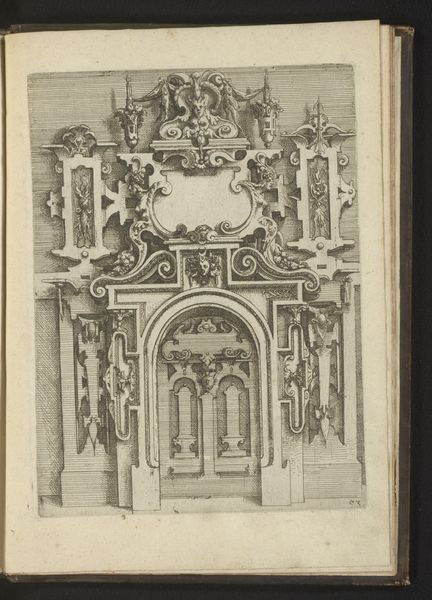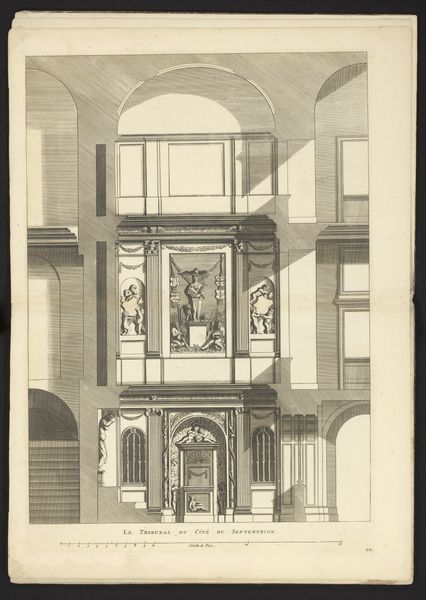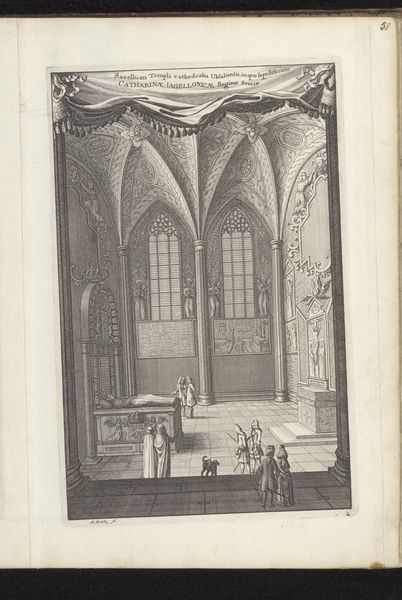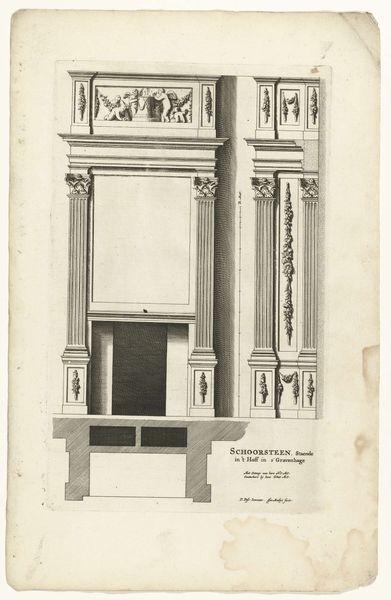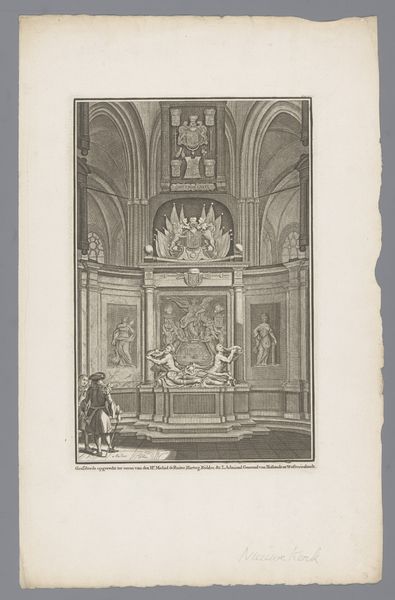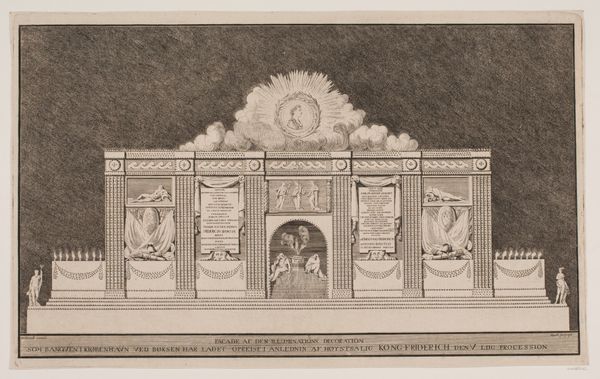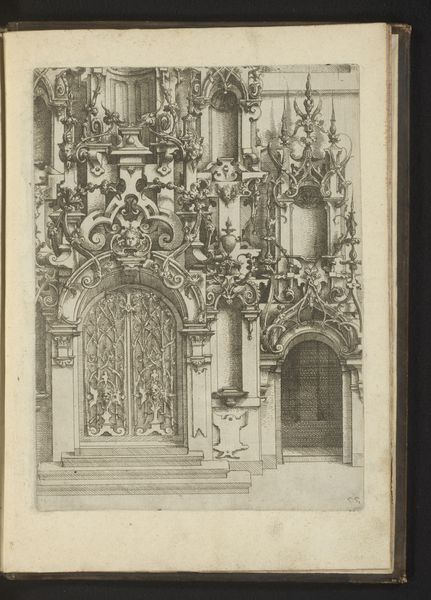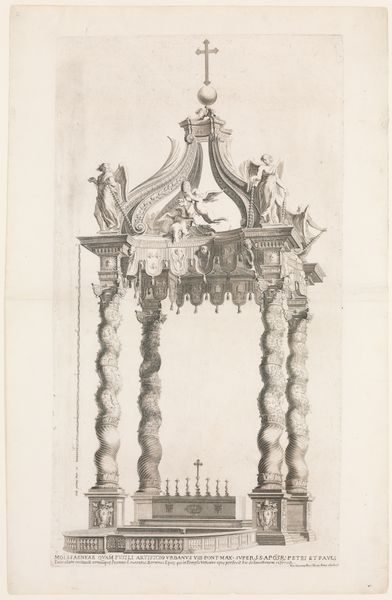
Westelijke muur van de Vierschaar in het Stadhuis op de Dam 1719 - 1783
0:00
0:00
drawing, print, sculpture, engraving, architecture
#
drawing
#
baroque
# print
#
classical-realism
#
perspective
#
form
#
sculpture
#
group-portraits
#
pen-ink sketch
#
line
#
cityscape
#
history-painting
#
academic-art
#
engraving
#
architecture
Dimensions: height 517 mm, width 360 mm
Copyright: Rijks Museum: Open Domain
This print by Dancker Danckerts depicts the west wall of the Vierschaar, the Amsterdam Town Hall's court of justice, sometime in the mid-17th century. The Vierschaar was where the city's most serious criminal cases were heard, and this print gives us a glimpse into how the space was designed to convey authority and power. Note how classical imagery, such as statues of Roman gods and allegorical figures, was employed to associate Amsterdam's governance with the wisdom and justice of the ancient world. The sunburst at the top evokes a sense of divine authority, reinforcing the idea that the court's decisions were not just human judgments, but were sanctioned by a higher power. To truly understand the meaning of this image, we have to consider the role of the Town Hall itself. It was not just a place of governance, but a symbol of Amsterdam's wealth and power during its Golden Age. Prints and drawings like this one were important tools for disseminating the image of Amsterdam as a leading center of commerce, culture, and justice. We can use city archives, guild records, and other historical documents to gain insight into the complex interplay of art, power, and social life in 17th-century Amsterdam.
Comments
No comments
Be the first to comment and join the conversation on the ultimate creative platform.
